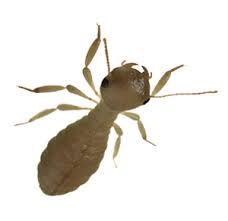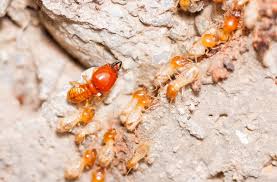Some Known Incorrect Statements About How To Control Termite In Plants
Termites, commonly known as"white ants", forage for food over a large region (50 to 100 metres) in search of wood, they operate and live in a central nest. The worker termites partially digest the timber into cellulose before returning to the nest to feed the colony. The Queen can put up to 1000 eggs every day and can live for 25 decades.

Chris Thomas, owner operator, will explain the entire procedure.2. You get to view the new container of Biflex or Termidor, and see it poured into the mix tank! 3. We finish the job to the Australian standards 4. We guarantee the best job in the best price5. We're a locally owned & operated Pest Control business.6.
We provide free Termite Treatment Estimates **  We are fully licenced, fully insured, and are your regional pest control proffesionals ** Contact us for more information** Please ring us for a free quote - 0408072250, or email Chris Thomas at  [email protected].
Subterranean termites are by far, the most common termites in North Carolina. Several subterranean species are native to North Carolina, but their biology and activity are all essentially the same. The Formosan subterranean termite, an imported species, has recently been identified in a few locations in the country, but they're not widely dispersed at this time.
The 5-Second Trick For How To Control Termite In Plants
To control termites, it is necessary to use pesticides. Pesticides used to control termites are called termiticides. Termiticides may be implemented as baits or liquids. When employed as a liquid, the termiticide is injected into the soil or to wood members of a construction. When a bait process is used, the lure is set in specially designed bait stations in the dirt around the outside perimeter of a structure.
TREATMENT OF STRUCTURES A termite treatment may involve any of the following basic measures:Mechanical alteration/sanitation Soil treatment Wood treatmentFoundation treatmentBait/monitoring systemMechanical alteration /sanitation Wood, paper, cardboard and other cellulose debris under or against a construction increases the risk of termite infestation. In click to find out more the same way, wood supports, fence posts etc., in contact with the soil and the structure present an easy accessibility for termite entry.

Soil treatment Treatment of this soil establishes a termiticide barrier in the ground under and adjacent to a building. A continuous barrier has to be established along the inside and out of the foundation wall, under slabs and around utility entrances.A vertical obstruction is established in the soil by trenching or trenching and rodding along all sides of foundation elements like foundation walls, chimney bases, pilasters, and pillars.

Unknown Facts About How To Control Termite In Plants
Termiticide is put by trenching or trenching and rodding in the cover of the grade to the peak of the footing or to a minimum depth of 30 inches. Where drain tile, french drains, or other foundation drainage systems present a hazard of contamination outside the treatment zone, treatment will probably be carried out in a manner that will not introduce the termiticide into the drainage system.
Soil around sewer pipes and conduits and all other structural members in contact with the soil must be treated. The insecticide should be mixed with water as needed on the pesticide label and implemented at the rate of 4 gallons per 10 linear feet, per foot of depth. It is likely to trench around the exterior of a slab after it's been poured, but this alone generally will not give satisfactory termite control since the termite colony may be entering the construction from the ground under the slab.
In addition, concrete slabs normally have many different points of entry including bath traps, plumping sockets, etc.. Slab construction requires a great deal of time and labour when treating for termites. Slab construction often will require precise drilling to block most of entry points. Slabs have to be drilled vertically along all cracks and construction joints at 12-inch intervals and no more than 6 inches from the foundation.